Vietnamese crispy pork belly or thịt heo quay is a favorite at family dinners and gatherings. You will fall head-to-toe in love with the succulent and tender pork pieces that are roasted to perfection with a layer of bubbly, incredibly crispy skin.
In Vietnamese BBQ shops, the locals will skewer and roast an entire pig on a spit roast. But since you’ll be making this dish at home, you don’t necessarily need to follow the traditional route. Instead, I’ll show you a quicker and more convenient way to recreate this Vietnamese classic using only an air fryer!
What Is Thịt Heo Quay?
Walking past BBQ restaurants, especially among Chinese communities in Vietnam, it’s easy to come across mouth-watering roasted pigs, ducks, and chickens hanging in cart windows. Among them, roasted pigs are the most beloved dishes in Vietnamese cuisine.
Thịt heo quay is most likely to have originated from Cantonese cuisine, where it is called Siu Yuk. In Vietnam, it’s one of the most popular dishes at feasts, weddings, family gatherings, and other special occasions.
The most distinct feature of thịt heo quay is undoubtedly the out-of-this-world crispy pork skin, which can only be achieved if you dry the meat properly and cook it at a high temperature. The layers of tender and juicy fat and meat underneath the skin, infused with various spices, further add to the dish’s appeal.
What Tools To Cook Crispy Thịt Heo Quay
Let’s start with the tools that you’ll need to have to make this recipe successful.
Ingredients You Need for a Perfection Thịt Heo Quay
When it comes to the ingredients, here is a list of what you need to prepare:
Quick and Easy Guide to Make Thịt Heo Quay
Making thịt heo quay takes time and practice. But worry not; just follow the steps in this recipe closely, and I guarantee you that the dish will come out perfectly!
Step 1: Briefly Boil The Pork
Fill a pot with water and bring it to a boil. When the water comes to a rapid simmer, add the pork belly (skin side facing down), ginger, shallots, star anises, black cardamom, and 1 tablespoon of salt. Boil for 5 minutes, then flip the pork and continue to cook for another 3 minutes.
Step 2: Make The Marinade
Combine the following ingredients: 1 tablespoon pepper, 1 tablespoon soy sauce, 2 teaspoons onion powder, 1 teaspoon five-spice powder, 1 teaspoon annatto powder, 1 teaspoon ginger powder, 1 teaspoon paprika, 1 teaspoon salt, and 1 tablespoon sugar.
Mix well to combine.
Set aside a small portion of the marinade and use it as the dipping sauce.
Step 3: Marinade The Pork And Puncture The Skin
After boiling, drain and pat the pork belly with paper towels to absorb the excess liquid.
Score the meat side of the pork, as shown in the photo below.
Rub the marinade on the meat part of the pork on all sides.
Wrap the pork with aluminum foil, except for the skin side. Using the needle meat tenderizer, poke as many holes as you can on the skin’s surface.
Mix 2 tablespoons of vinegar and 1 teaspoon of salt. Brush this mixture well on the skin.
Refrigerate the pork for at least 4 hours to dry the skin out. You can also sun dry the pork or dry it with a hair dryer.
Step 4: Air Fry The Pork Belly
Preheat the air fryer to 400 degrees F (about 5 minutes).
Next, you’ll need to air fry the pork 3 times.
First, air fry it at 356 degrees F for 15 minutes (skin side facing up).
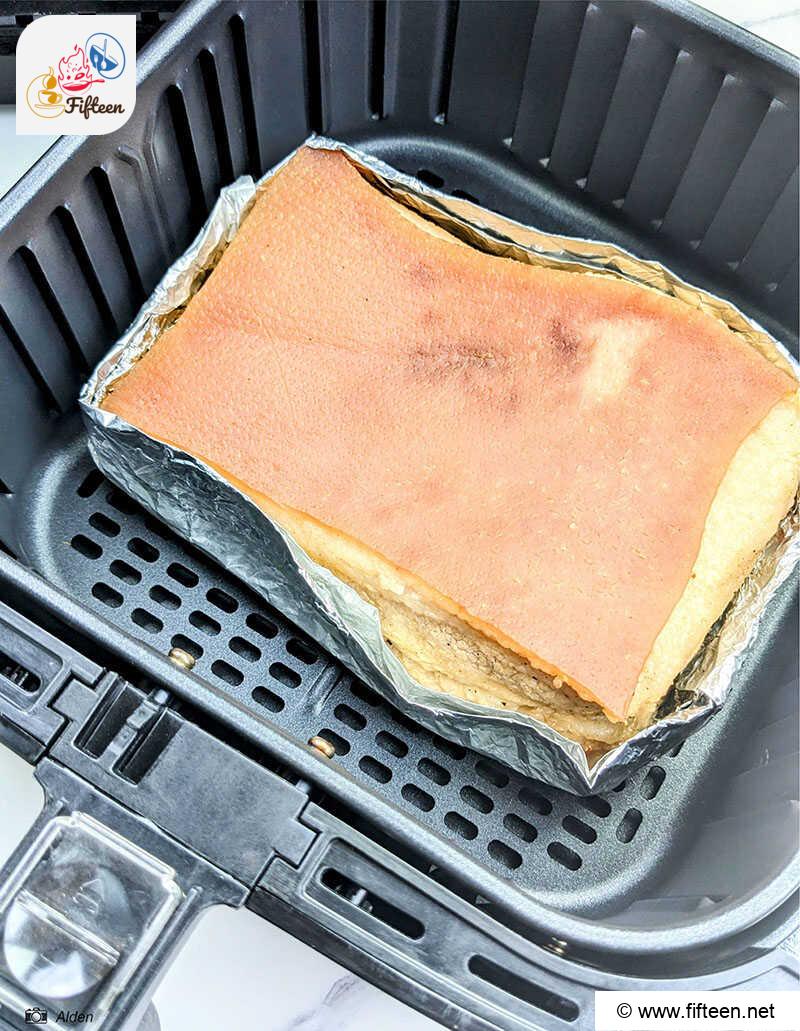
Then, brush the skin with the vinegar and salt mixture.
Next, air fry it for 15 minutes at 375 degrees F.
Afterward, remove the aluminum foil and brush the remaining vinegar mixture on the skin. Once done, air fry the pork for another 10 minutes at 400 degrees F.
Step 5: Make The Sauce
Boil the marinade that you’ve set aside with about 1 tablespoon of water. Once the sauce comes to a rapid simmer, add the minced garlic and minced chili pepper. Reduce the heat to low and cook until the sauce thickens slightly.
Step 6: Serve The Dish
Let the pork rest for about 15 minutes, then cut it into pieces of your preferred size. Serve it with bánh mì (Vietnamese baguette), bánh hỏi (woven vermicelli), pickles, cucumber, and vegetable salad.
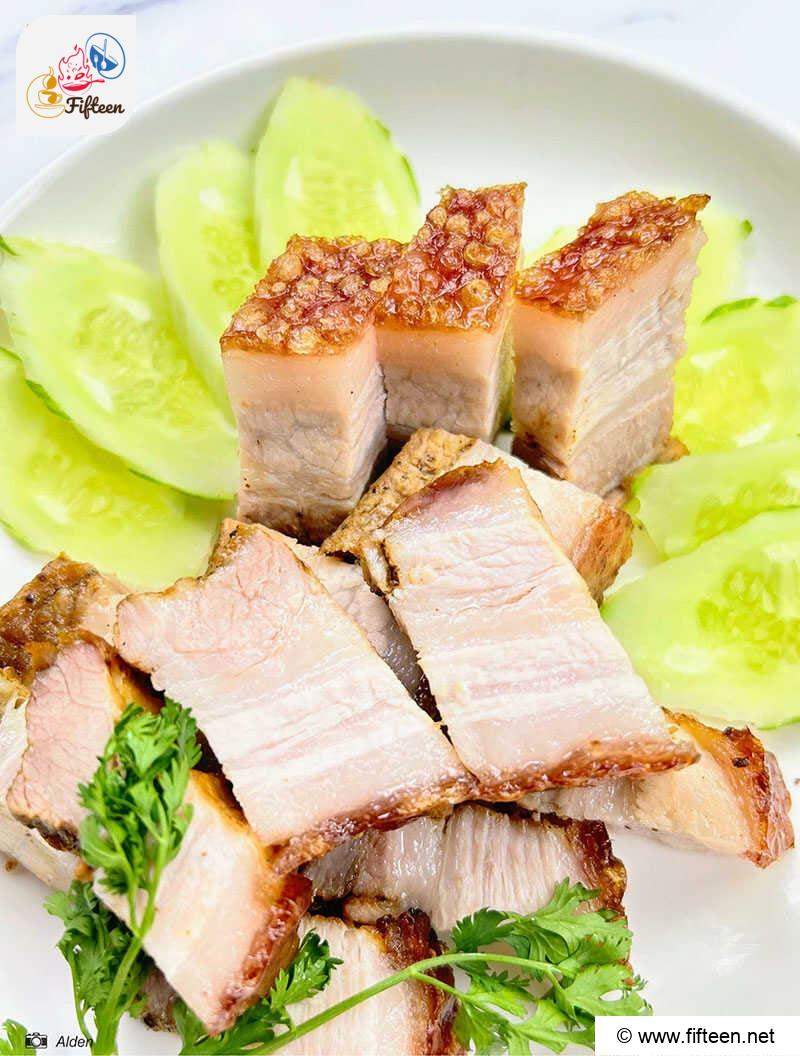
Important Notes And Variations
Take a quick look at these notes to prevent common mistakes and learn a few alternatives for the recipe.
Tips For Choosing The Best Pork Belly
It’s vital to choose the right piece of pork belly, as it can easily make or break your dish. Note down these tips before you go shopping.
Excellent Side Dish Suggestions
Vietnamese crispy pork belly pairs well with a lot of dishes. If you want some vegetables to balance the fattiness, I recommend giving Vietnamese pickled mustard greens (dưa chua) a try. You can even stir-fry the pork with these pickles. Sliced cucumber or lettuce are good options, too, in case you want something quick.
Besides, you can serve your thịt heo quay with steamed rice, Bánh Mì, vermicelli noodles, or Vietnamese woven vermicelli (bánh hỏi). For an extra decadent meal, I also suggest pairing the pork with fried baozi (bánh bao chiên).
Storing Your Thịt Heo Quay The Proper Ways
Have some leftovers? The best way to store them is to put them in an airtight container and refrigerate them. The pork will stay good for 3 to 5 days this way. If possible, only slice the part you plan to eat and leave the rest whole to retain its moisture.
You can also freeze the roasted pork for up to 3 months, but I don’t recommend doing so. The skin tends to get soggy after thawing.
To reheat, air fry your pork belly or cook it in a toaster oven for about 5 minutes at 325 degrees F.
Time To Feast On The Crispiest Pork Belly!
With its succulent meat, irresistibly crispy skin, and the perfect balance of spices, thịt heo quay will surely steal the show at your next family gathering or dinner party. And by using the air fryer instead of deep frying, the dish will be healthier and easier to cook than ever.
Did you enjoy making this delicious Vietnamese delicacy? Remember to leave a comment below sharing any feedback, tips, or thoughts that you have. If you find the recipe delightful, be sure to like and share it with other people who also enjoy cooking tasty dishes!
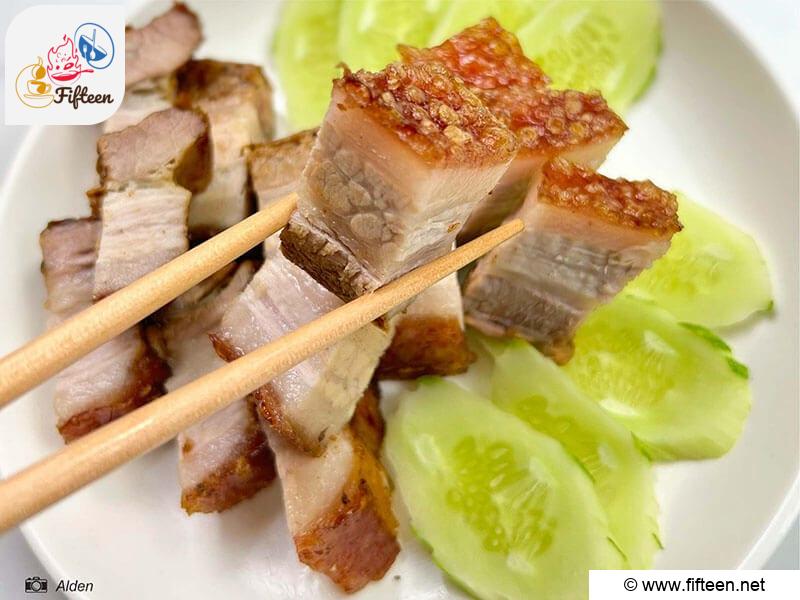
Thịt Heo Quay Recipe (Vietnamese Crispy Pork Belly)
Equipment
- Air Fryer
- Pot
- Knife
- Chopping Board
- Needle meat tenderizer
- Basting Brush
- Tongs
- Aluminum Foil
Ingredients
- 1.3 pounds pork belly
- 6 small shallots
- 0.7 ounces ginger
- 2 star anises
- 1 black cardamom
- 1 tablespoon pepper
- 1 tablespoon soy sauce
- 2 tablespoons vinegar
- 2 teaspoons onion powder
- 1 teaspoon five-spice powder
- 1 teaspoon annatto powder
- 1 teaspoon ginger powder
- 1 teaspoon paprika
- 3 teaspoons salt
- 1 tablespoon sugar
- 0.7 ounces minced garlic
- 0.35 ounces minced chili
Instructions
- Boil water in a pot, then add pork belly (skin down), ginger, shallots, spices, and salt. Boil for 5 minutes, flip, and cook 3 more minutes.
- Combine the following ingredients: pepper, soy sauce, onion powder, five-spice powder, annatto powder, ginger powder, paprika, salt, and sugar. Mix well.
- Set aside a small portion of the marinade and use it as the dipping sauce.
- After boiling, drain and pat the pork belly with paper towels to absorb the excess liquid. Score the meat side of the pork (see photo). Rub the marinade on the meat part of the pork on all sides.
- Wrap the pork with aluminum foil, except for the skin side. Using the needle meat tenderizer, poke as many holes as you can on the skin’s surface.
- Mix vinegar with salt. Brush this mixture well on the skin.
- Refrigerate pork for 4 hours to dry the skin (or sun-dry/use a hairdryer). Preheat air fryer to 400°F. Air fry pork at 356°F for 15 minutes, skin side up. This is the first of 3 air frying sessions.
- Brush the skin with the vinegar and salt mixture. Next, air fry it for 15 minutes at 375 degrees F.
- Remove the aluminum foil and brush the rest of the vinegar mixture on the skin.
- Once done, air fry the pork for another 10 minutes at 400 degrees F.
- Boil reserved marinade with a little water. Add minced garlic and chili pepper once simmering. Reduce heat and simmer until sauce thickens.
- Let the pork rest for about 15 minutes, then cut it into pieces of your preferred size. Serve it with Bánh Mì (Vietnamese baguette), Bánh Hỏi (woven vermicelli), pickles, cucumber, and vegetable salad.
Video
Notes
- The pork skin must be completely dry in order to achieve the desired crispiness.
- Leave the skin uncovered when refrigerating.
- If you don’t have a needle meat tenderizer, you can use a spike, fork, or toothpick to puncture the skin.
- Baking powder, baking soda, mirin, and lime juice also provide the same effect as vinegar, so you can use them instead.
- Some people also like to add a little fermented red bean curd to the marinade to give it a unique twist of flavor.


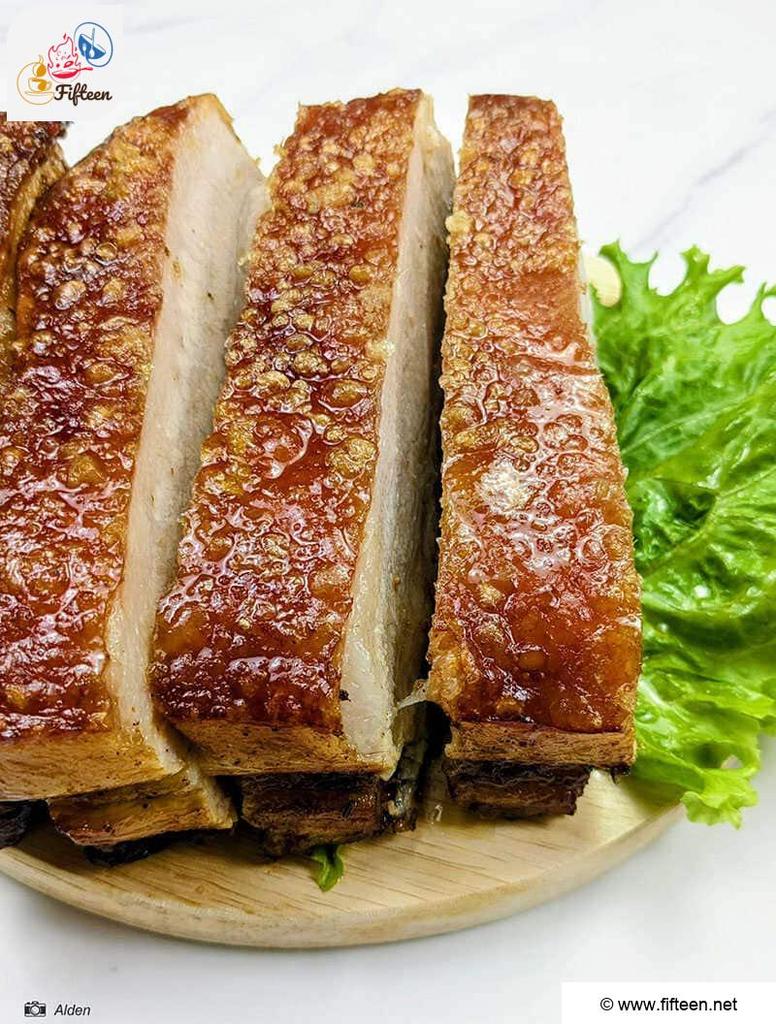
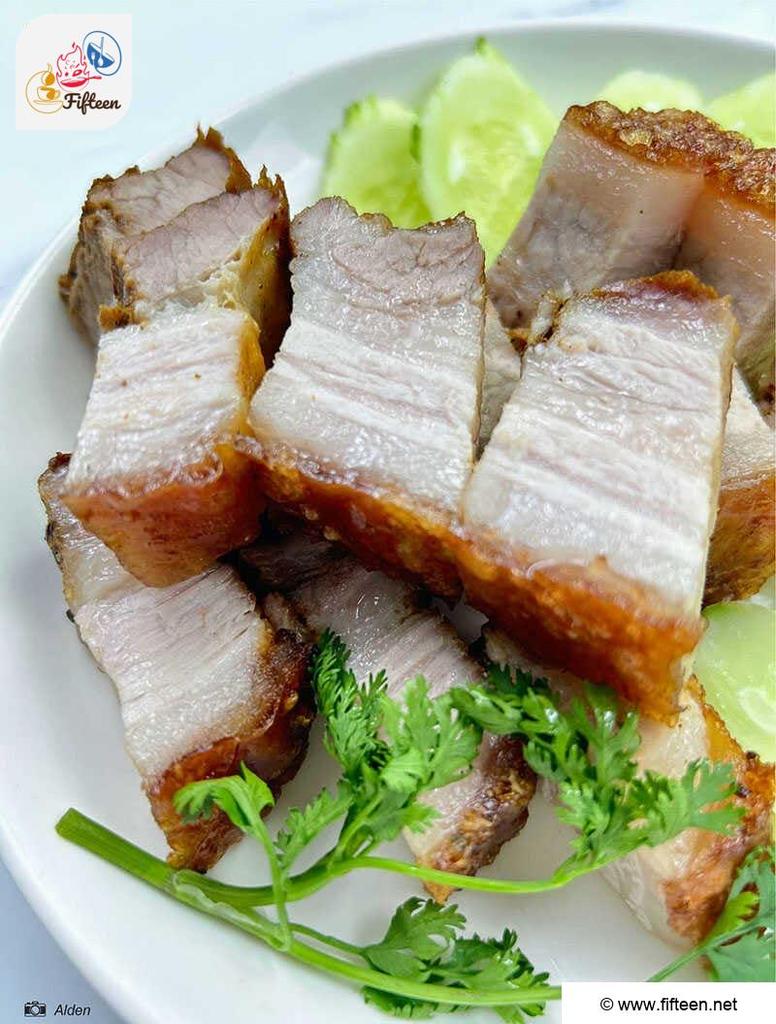
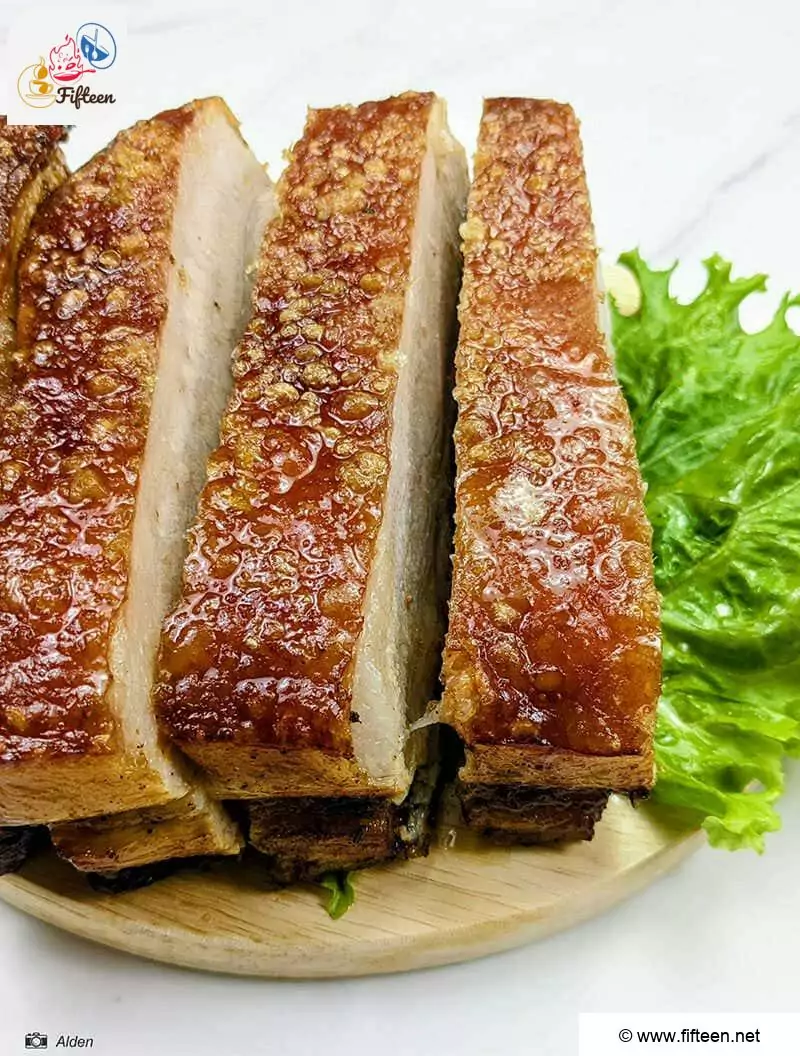
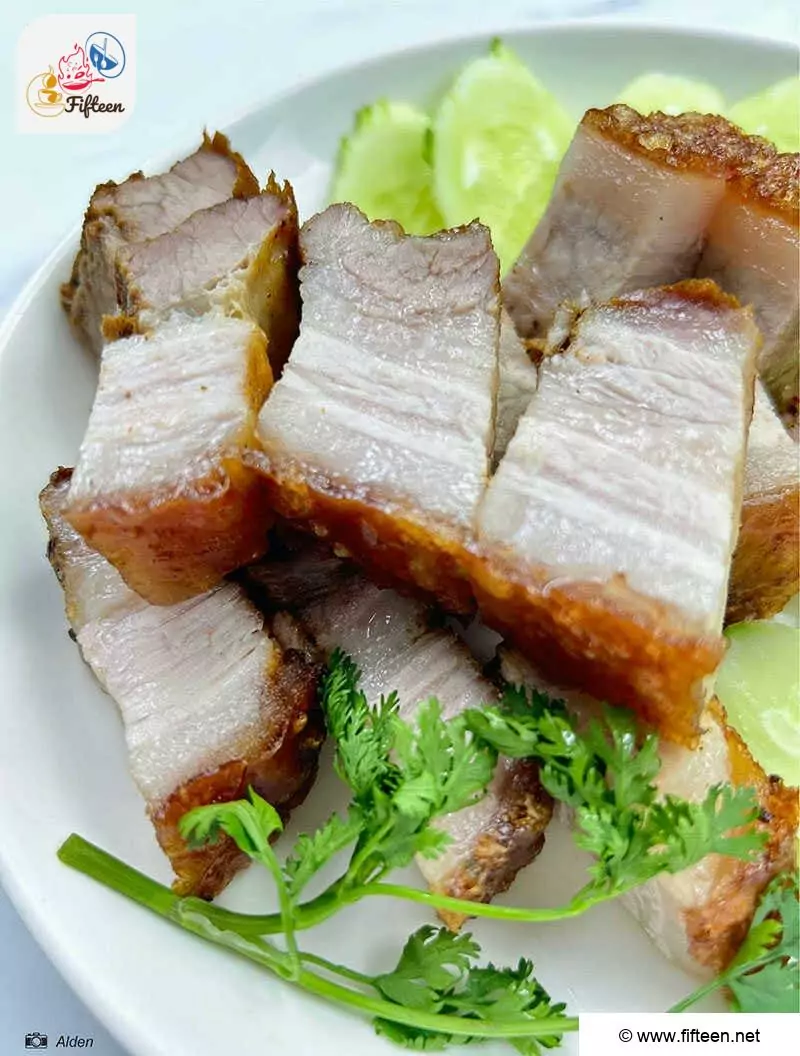
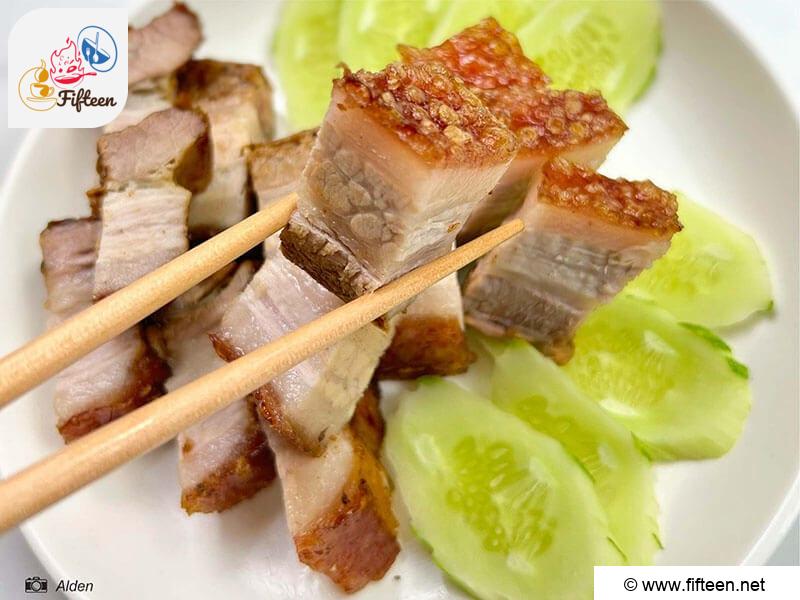
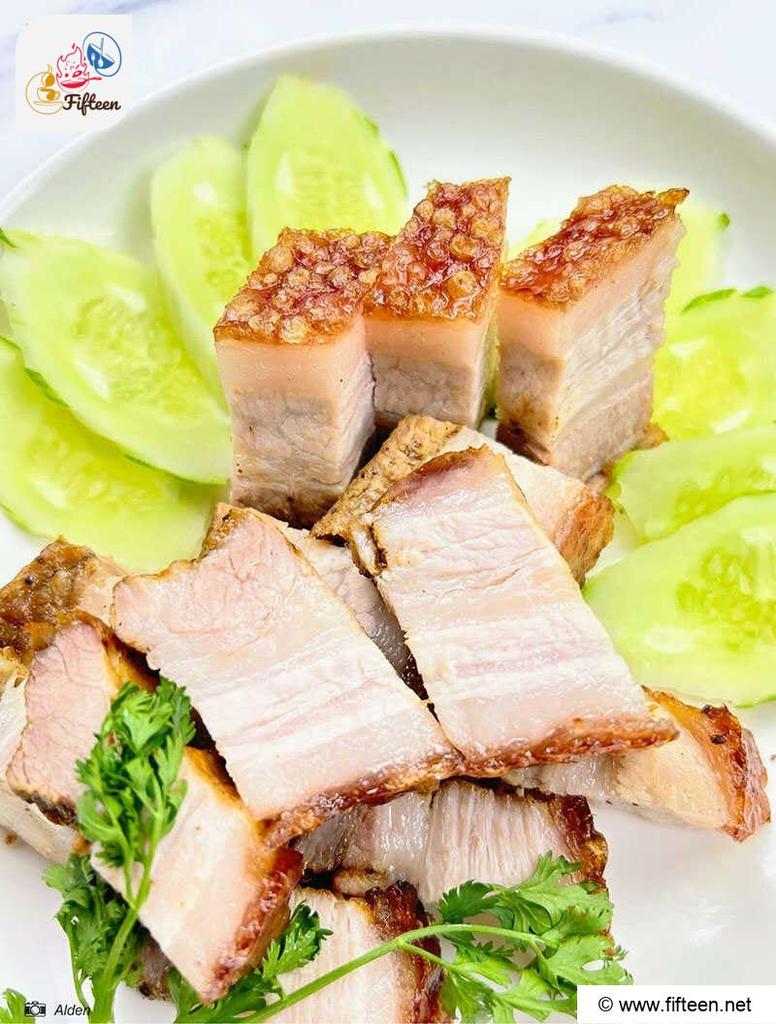
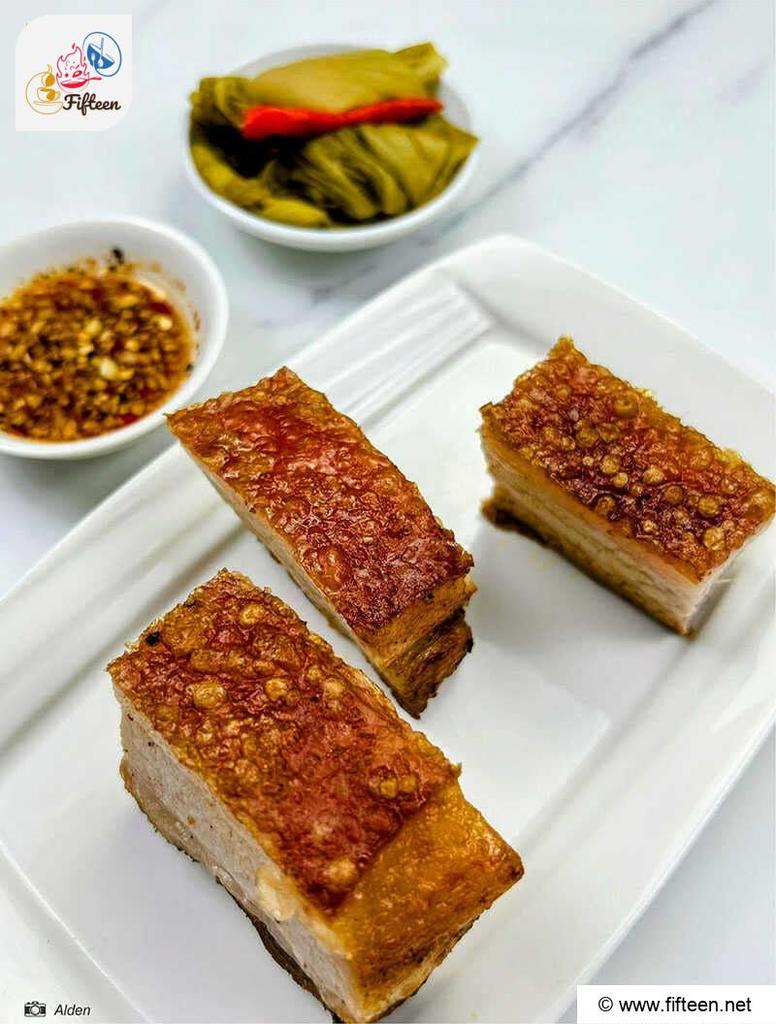
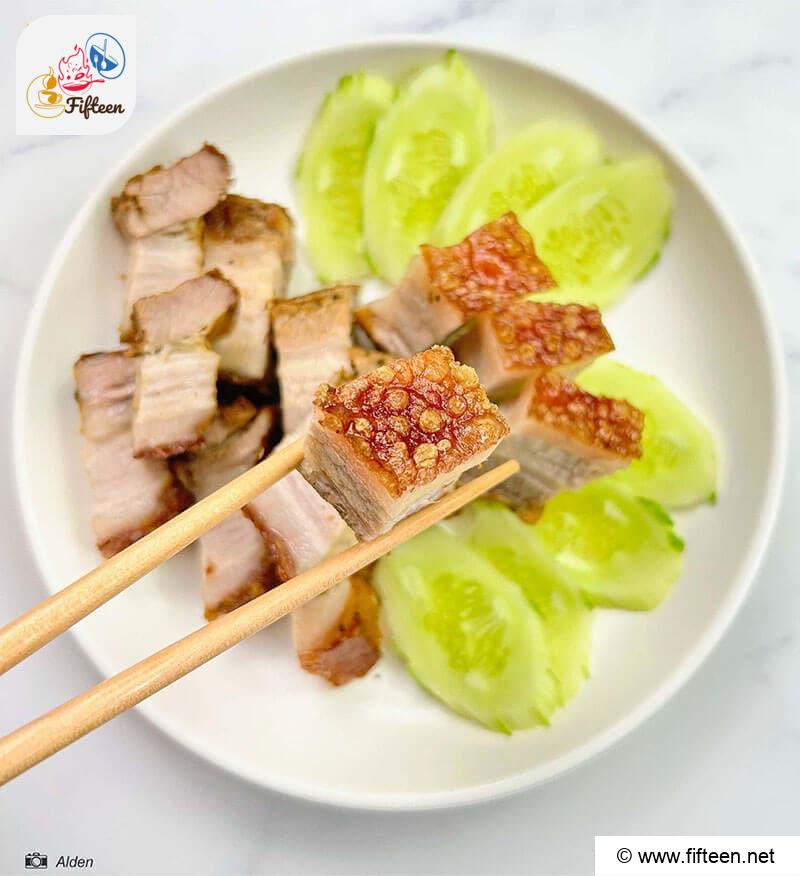
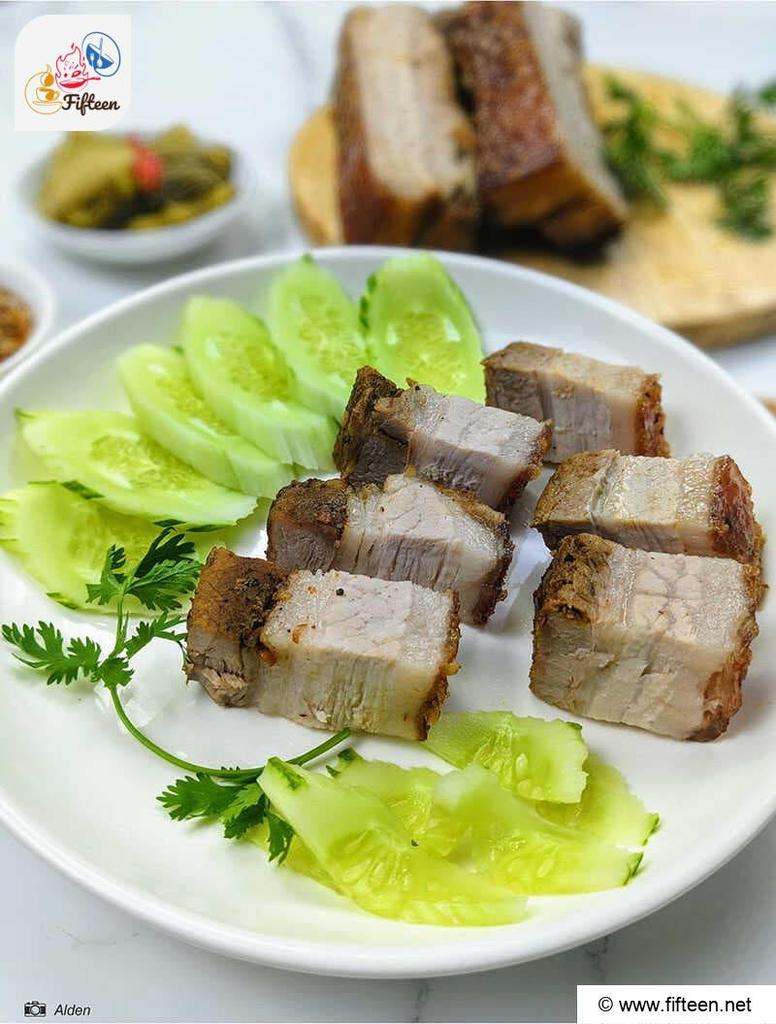
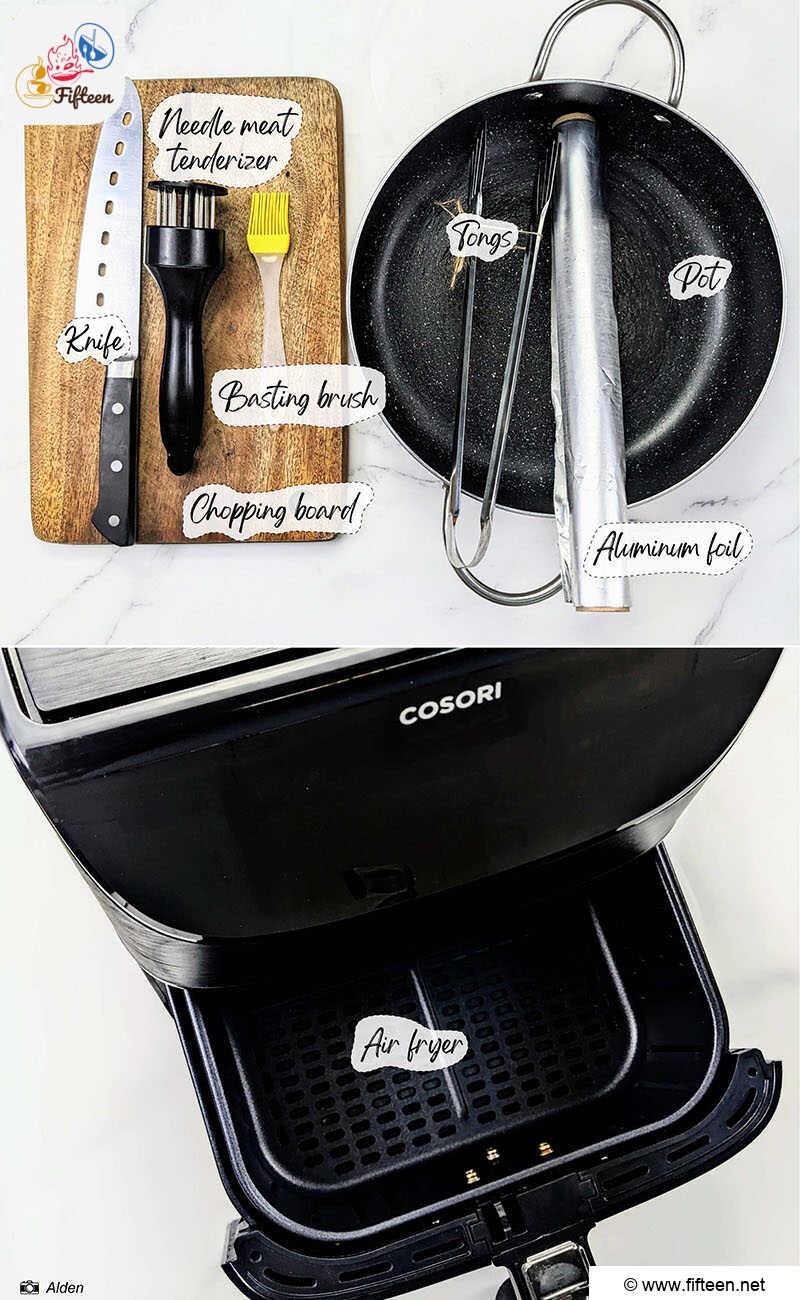
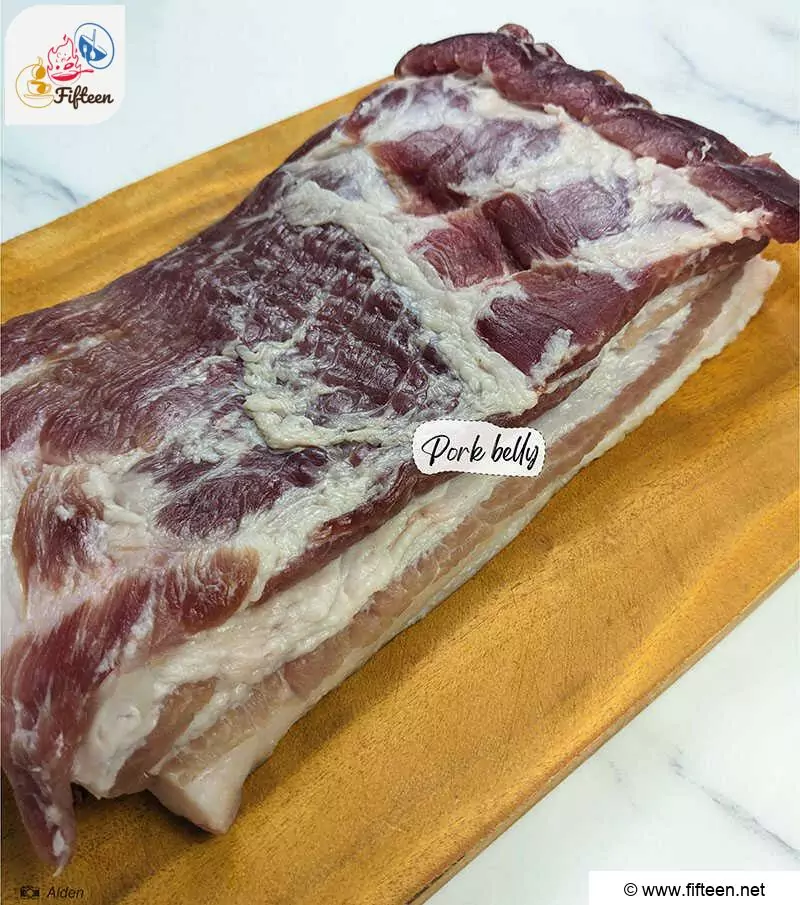
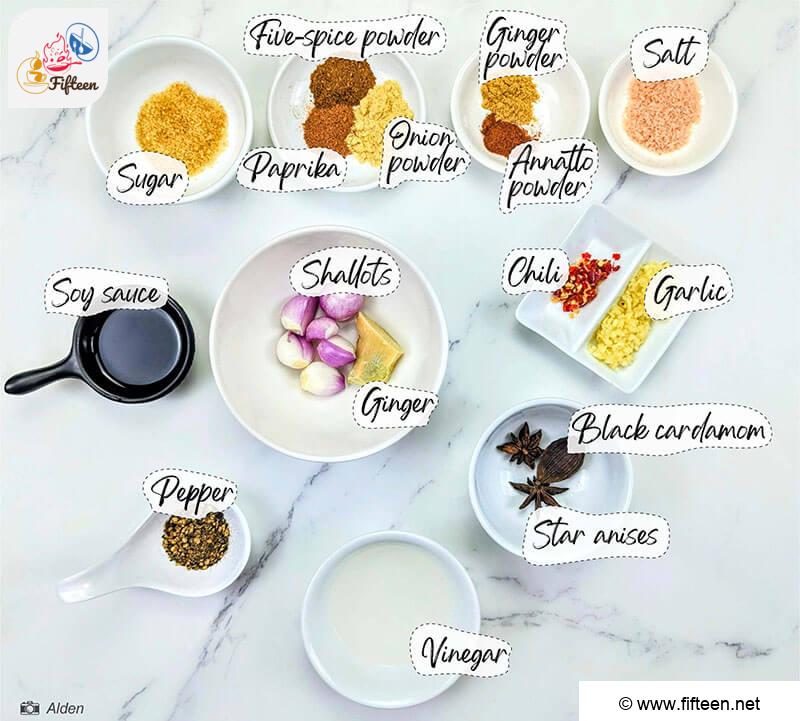
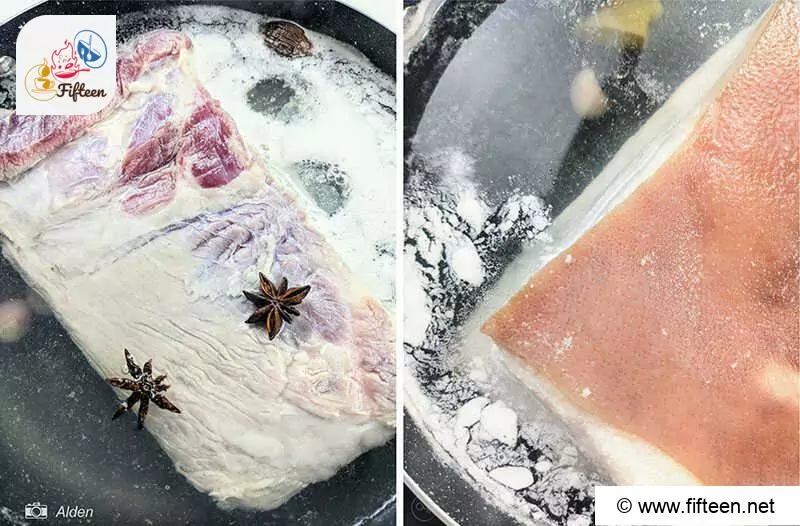
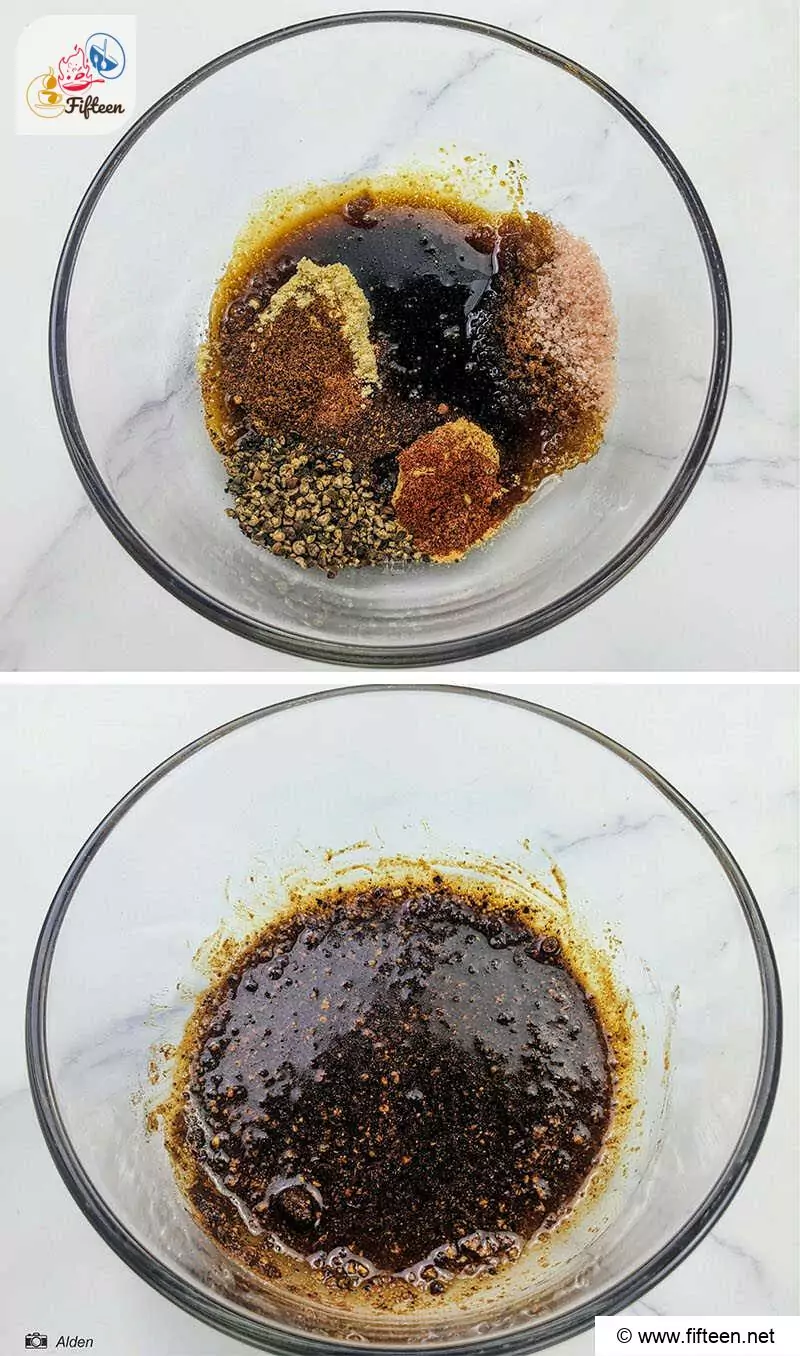
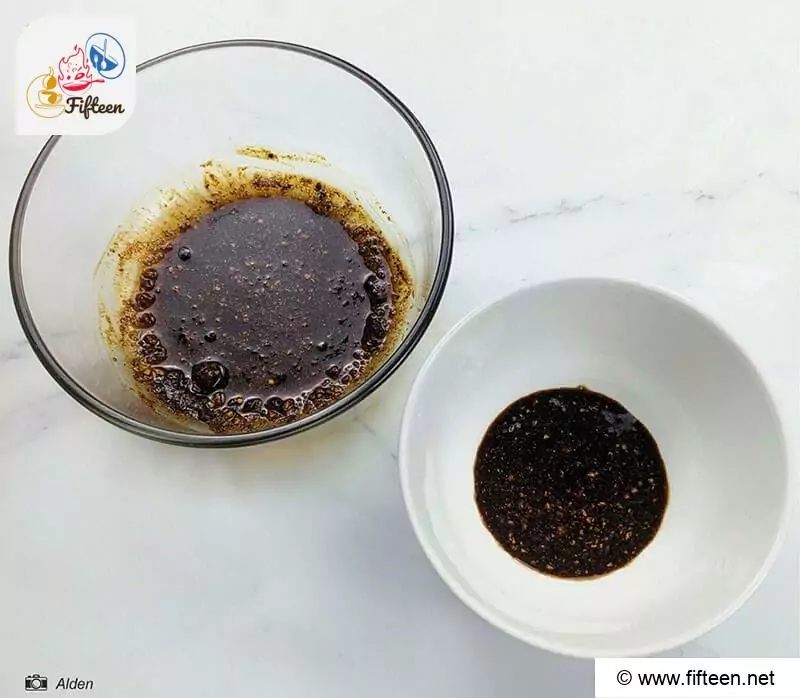
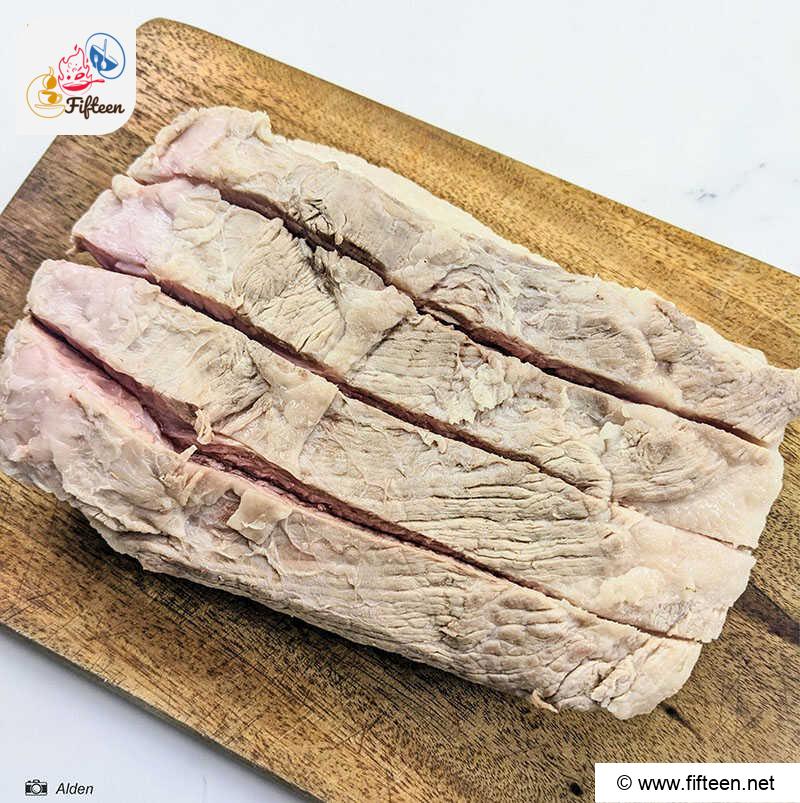
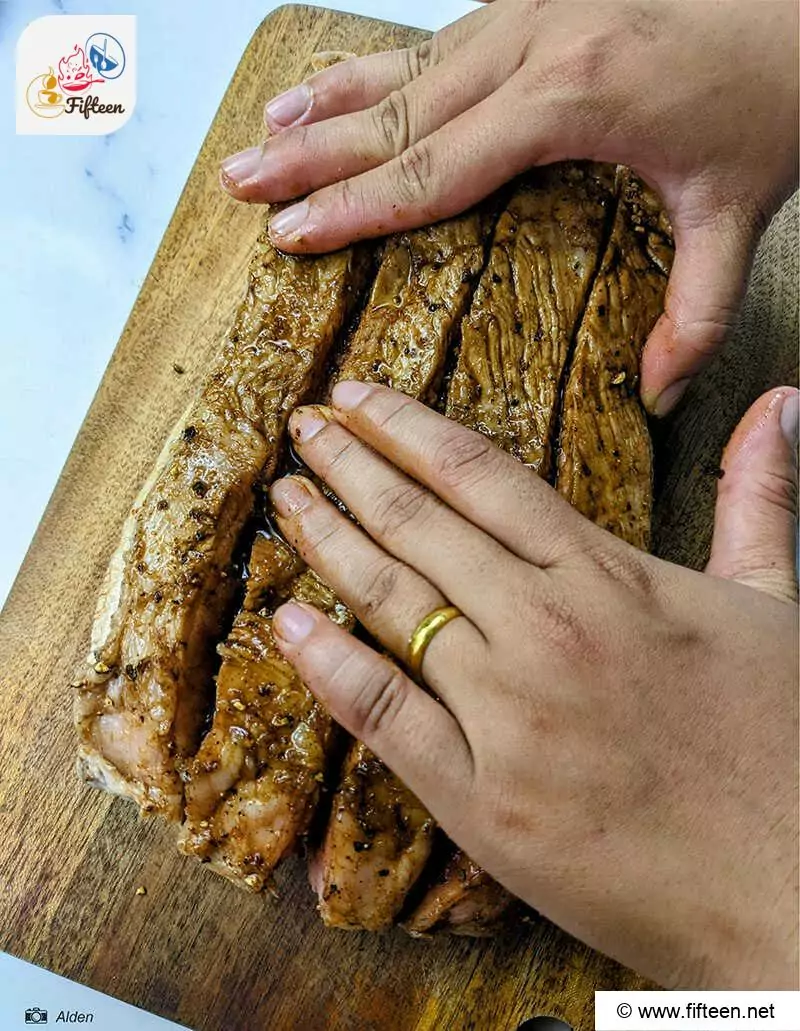
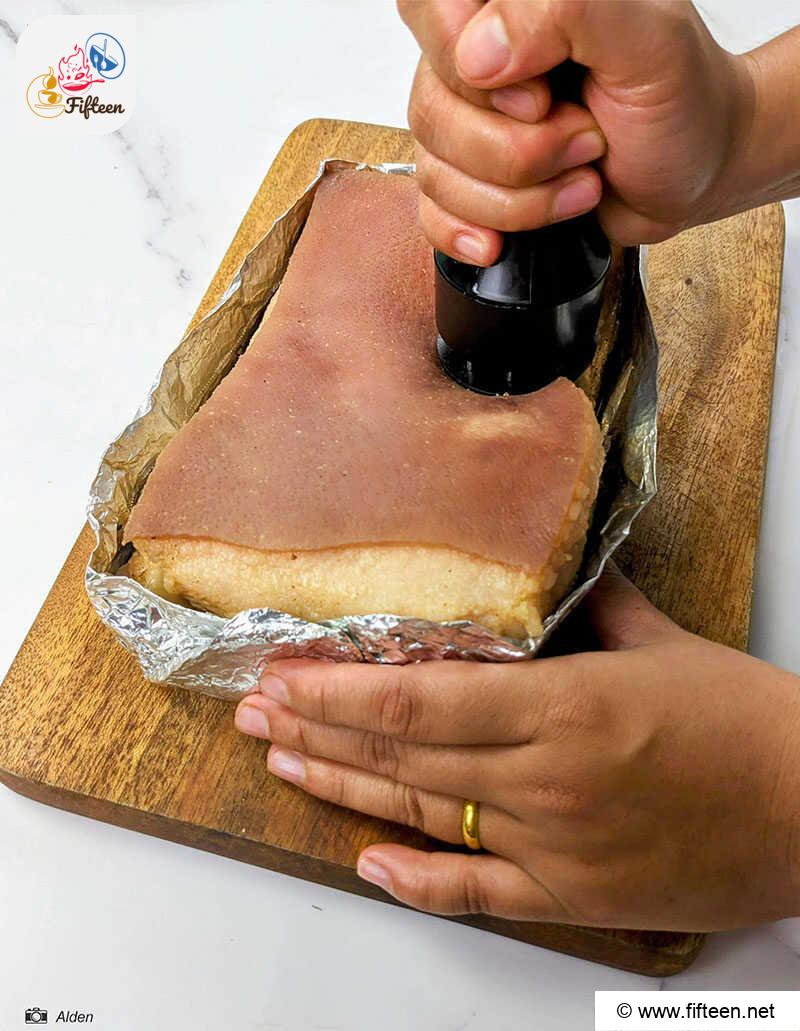
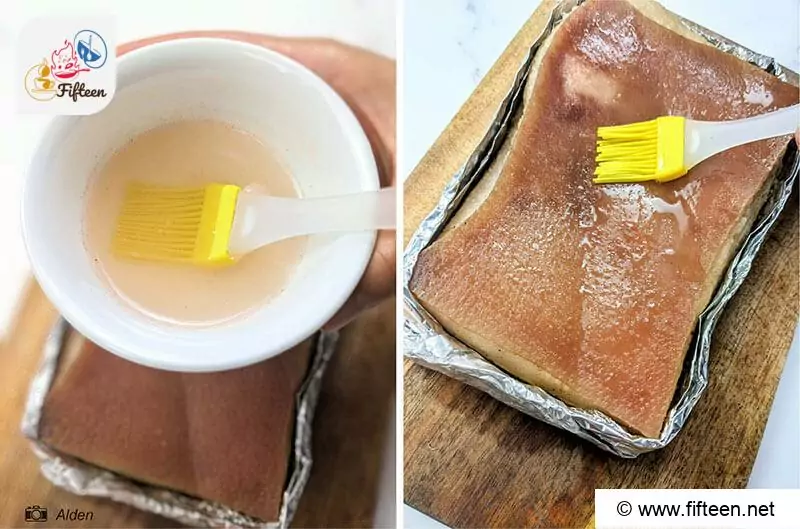
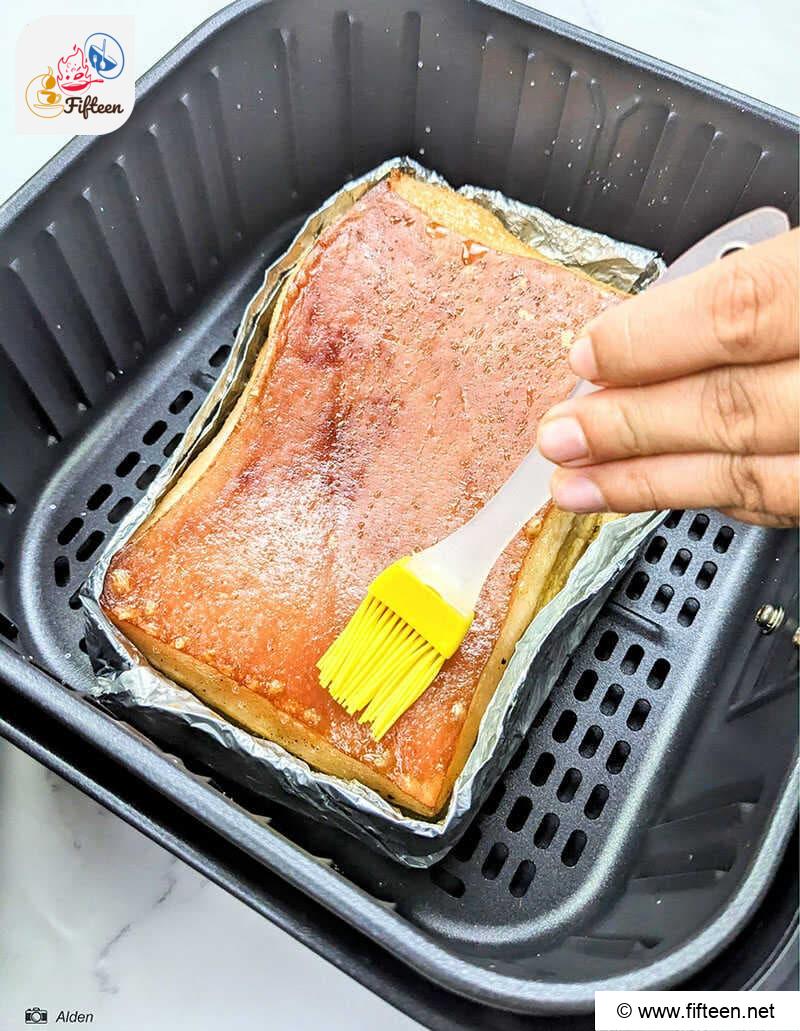
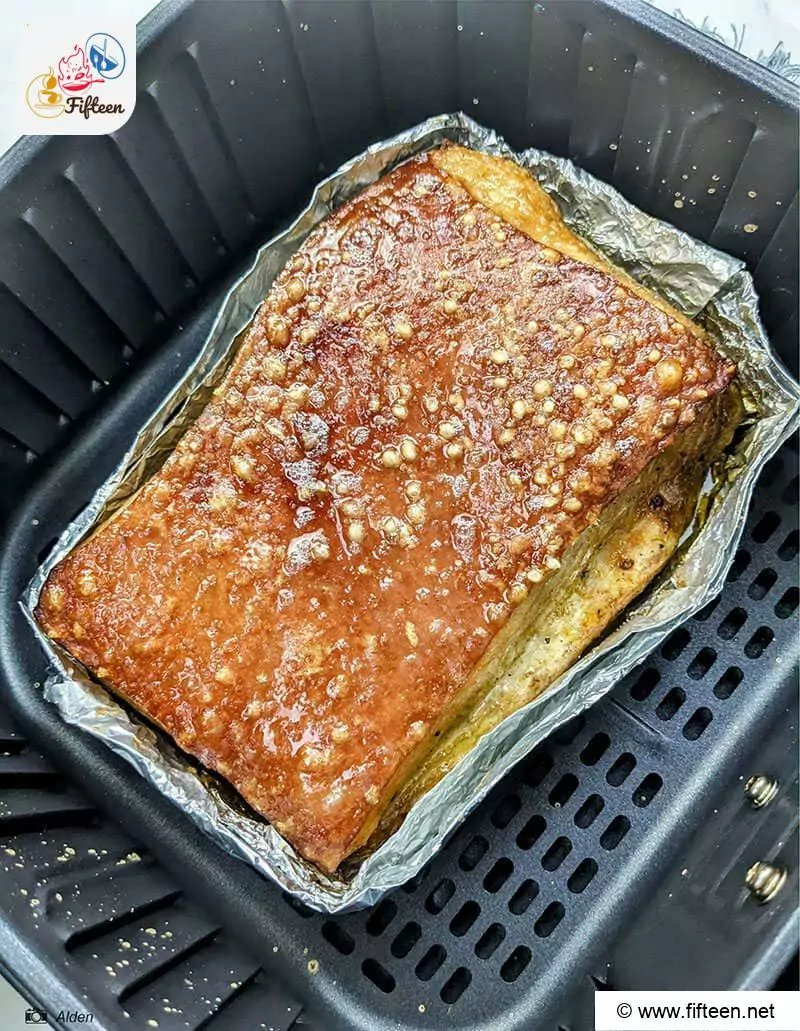
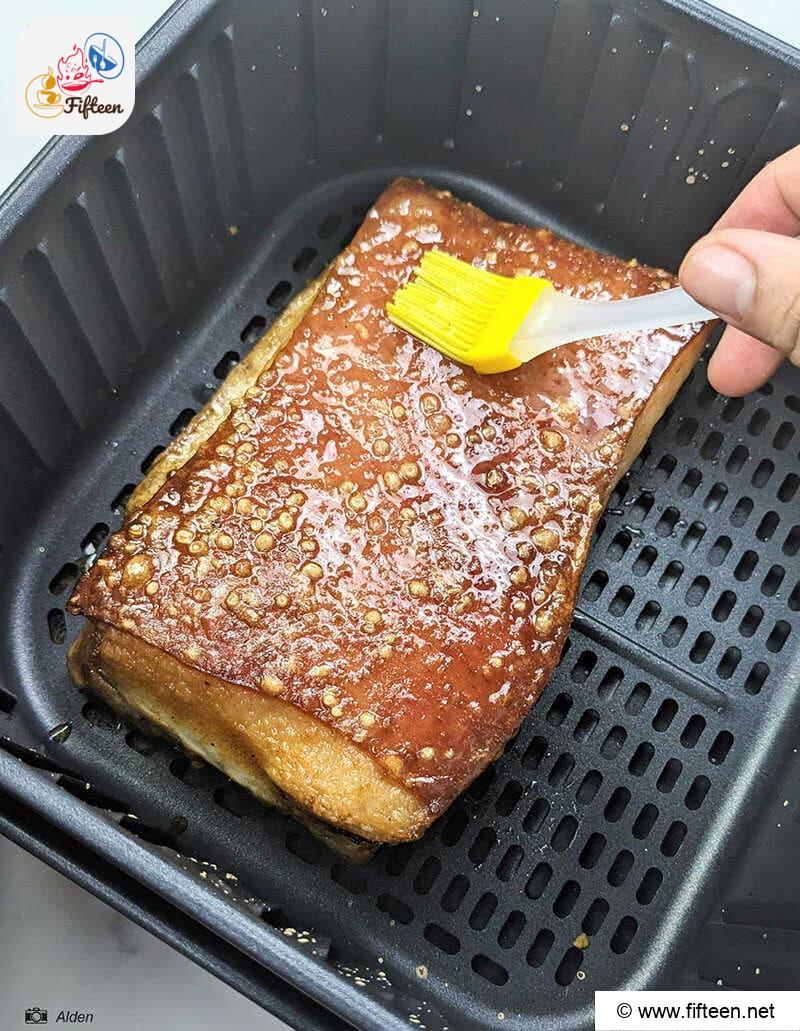
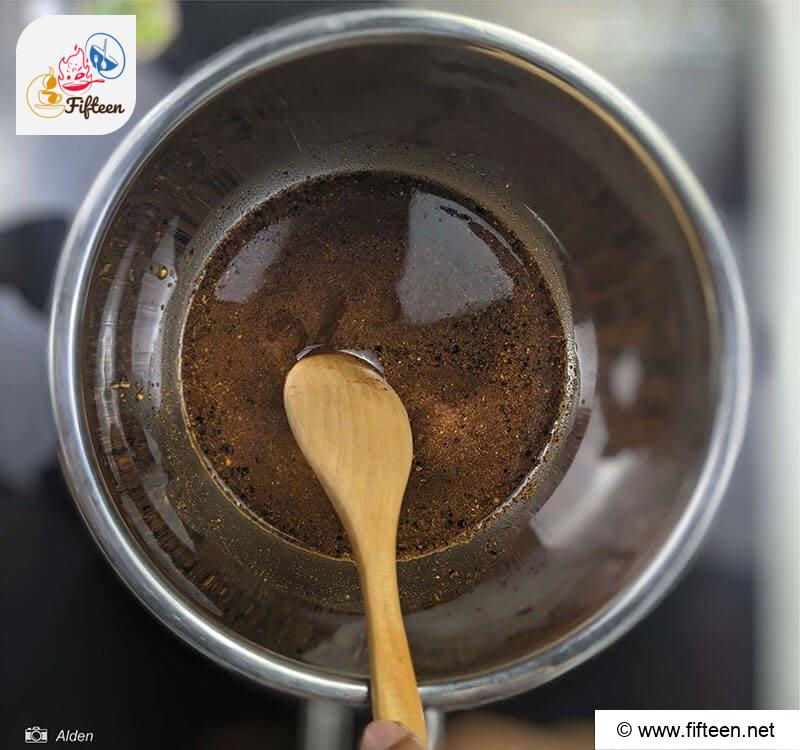
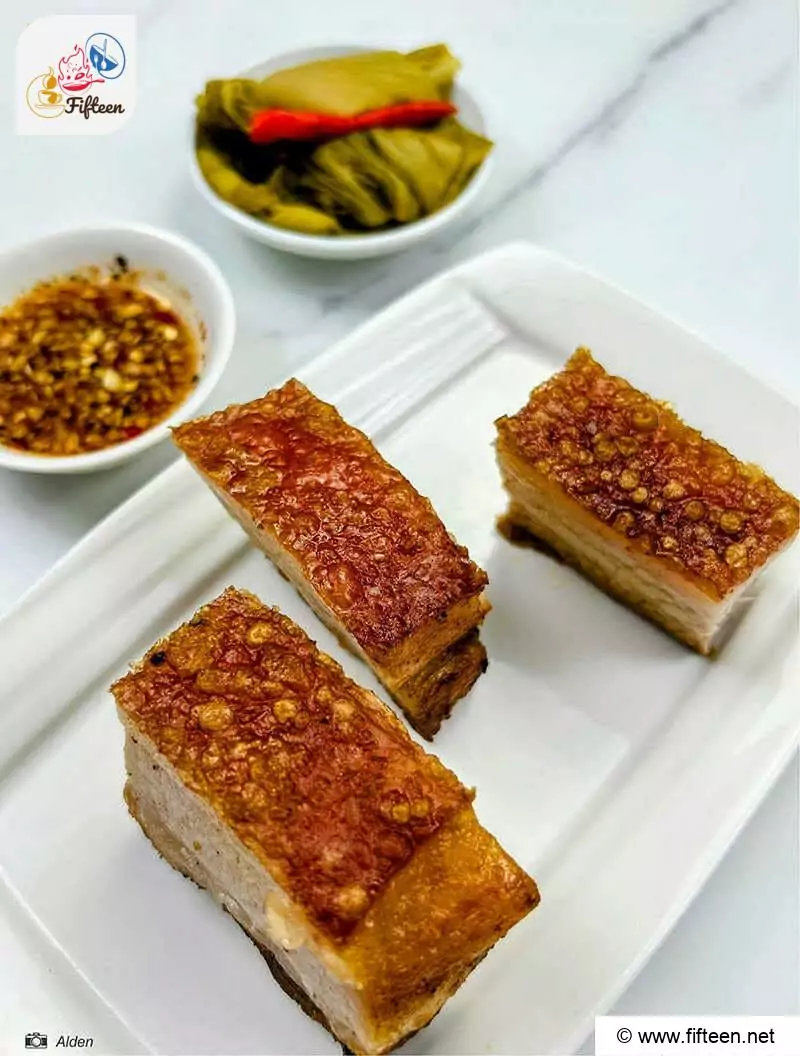
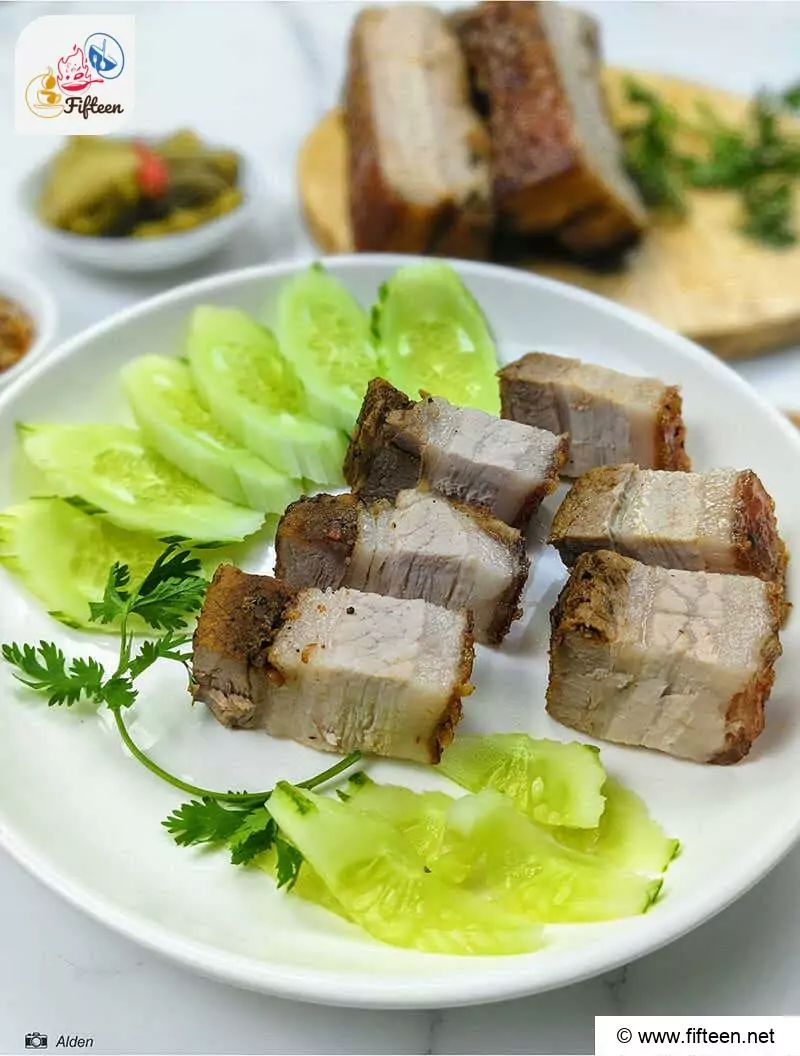
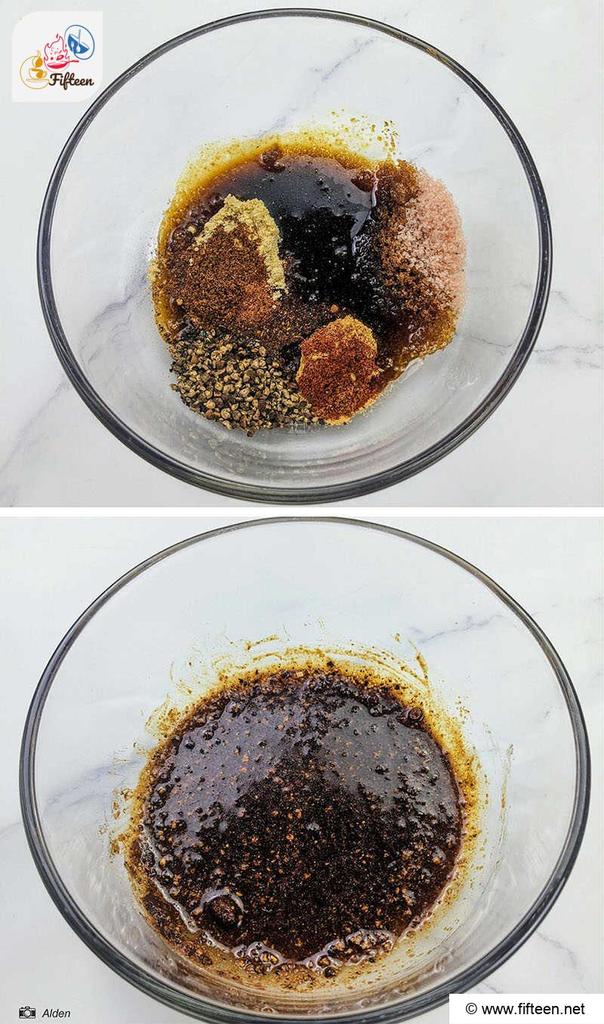
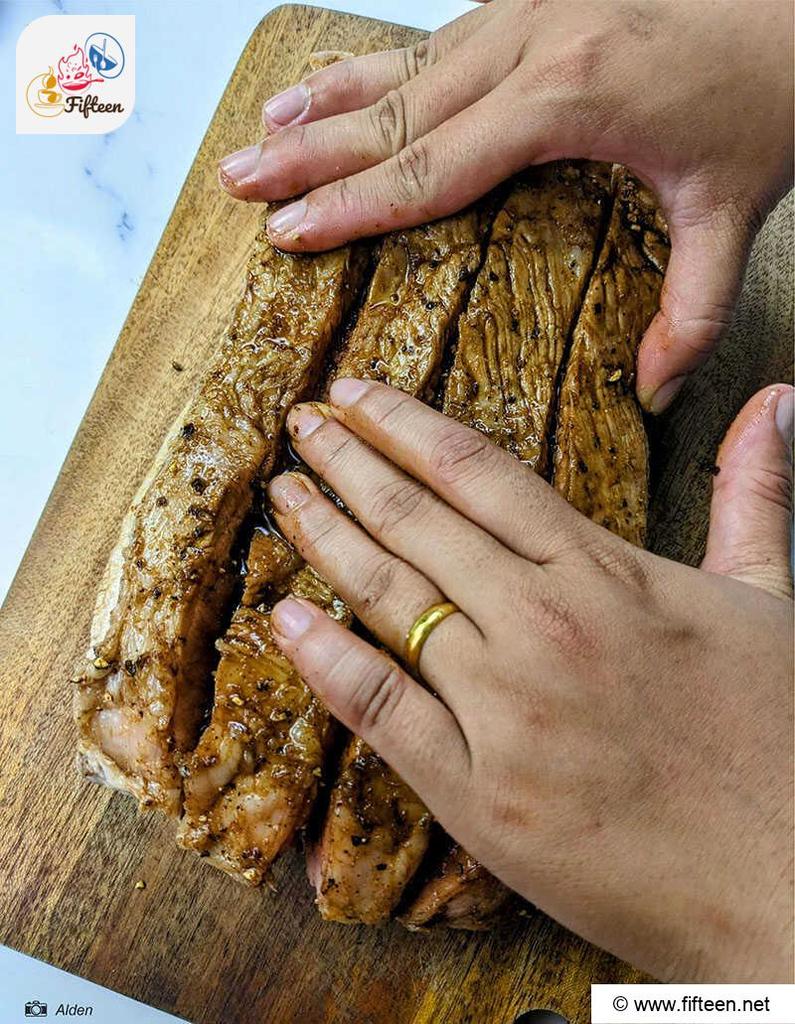
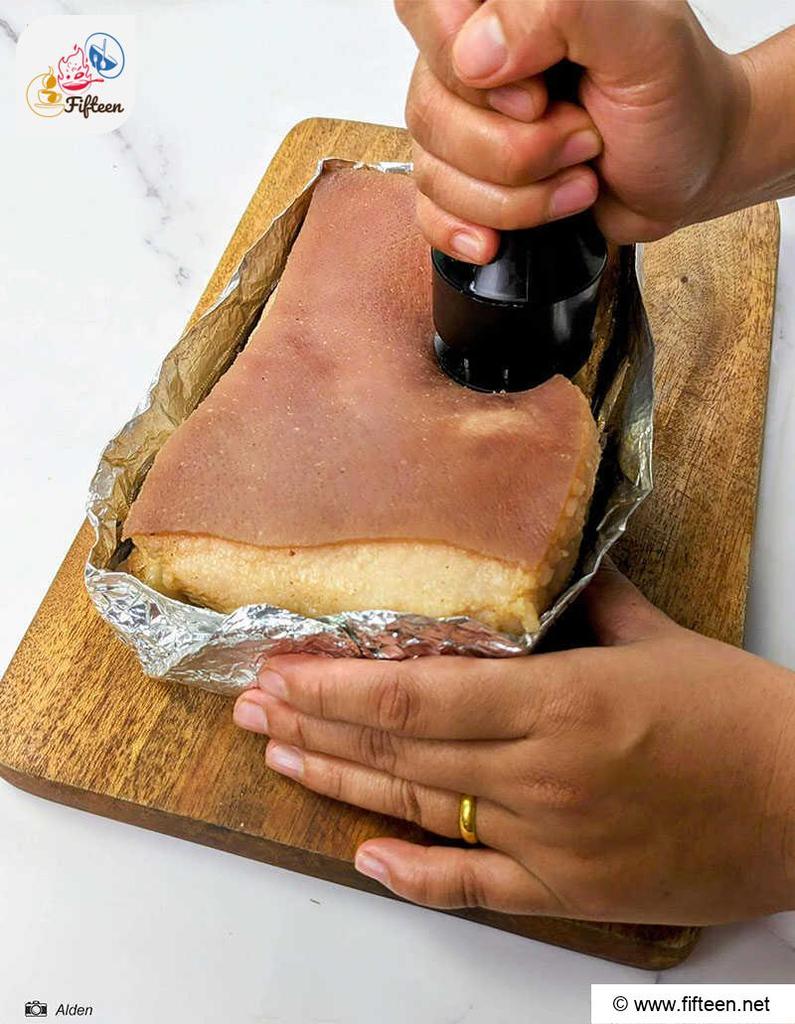
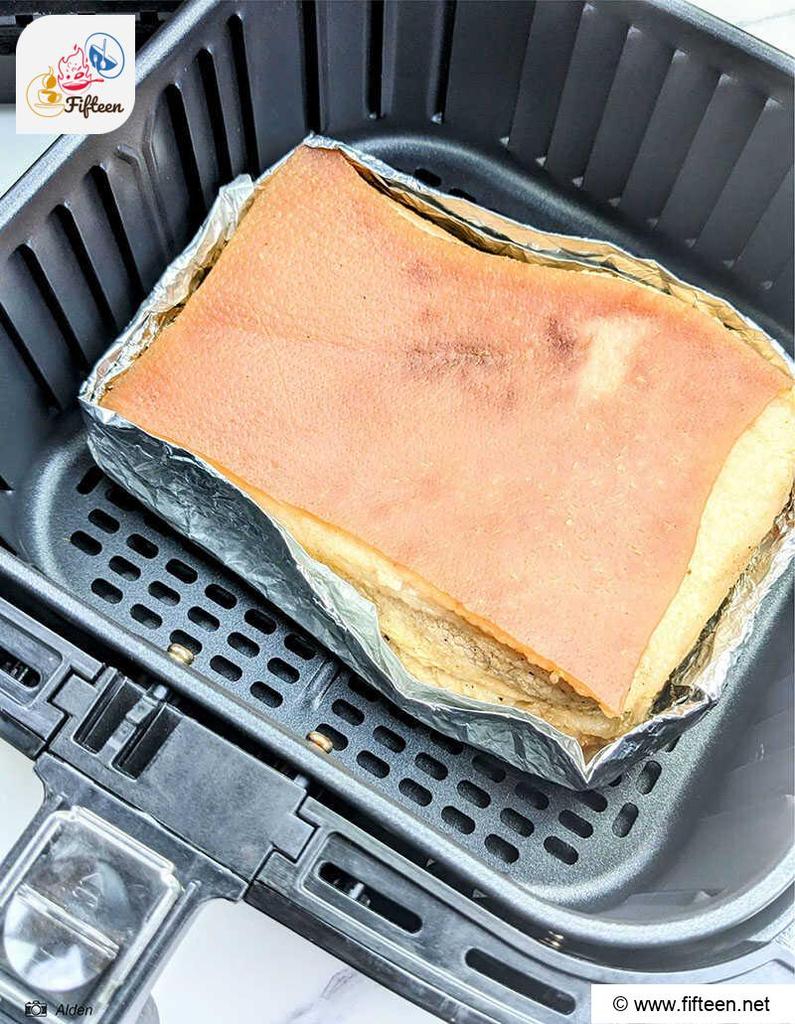
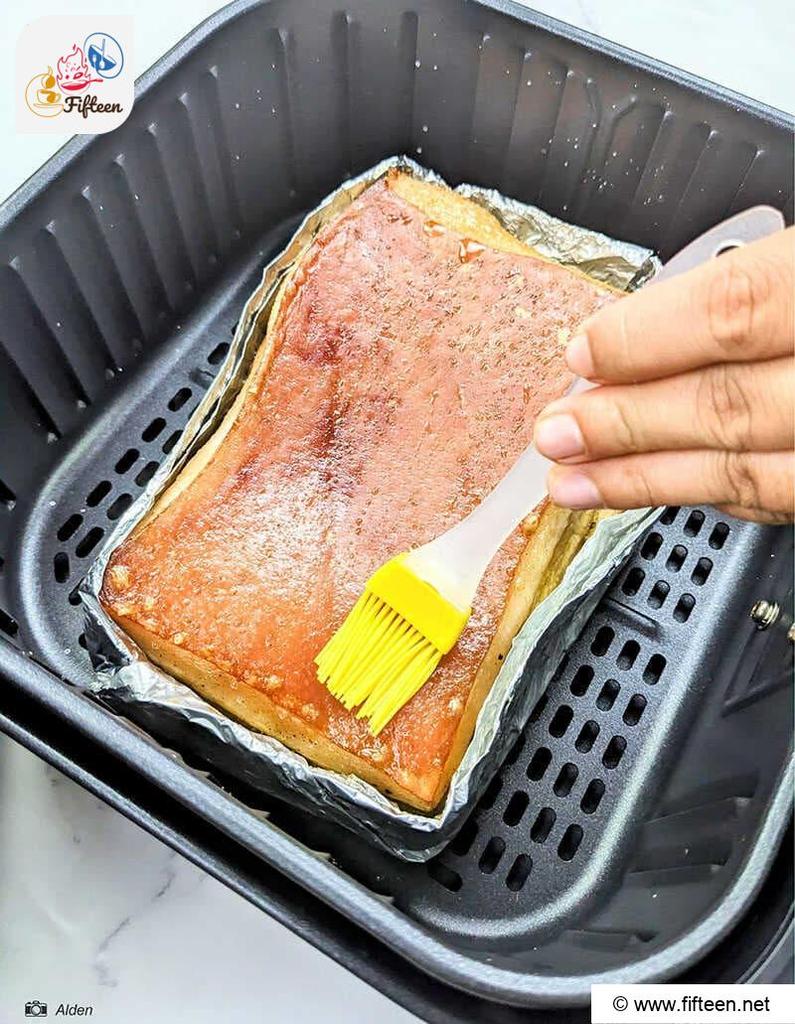
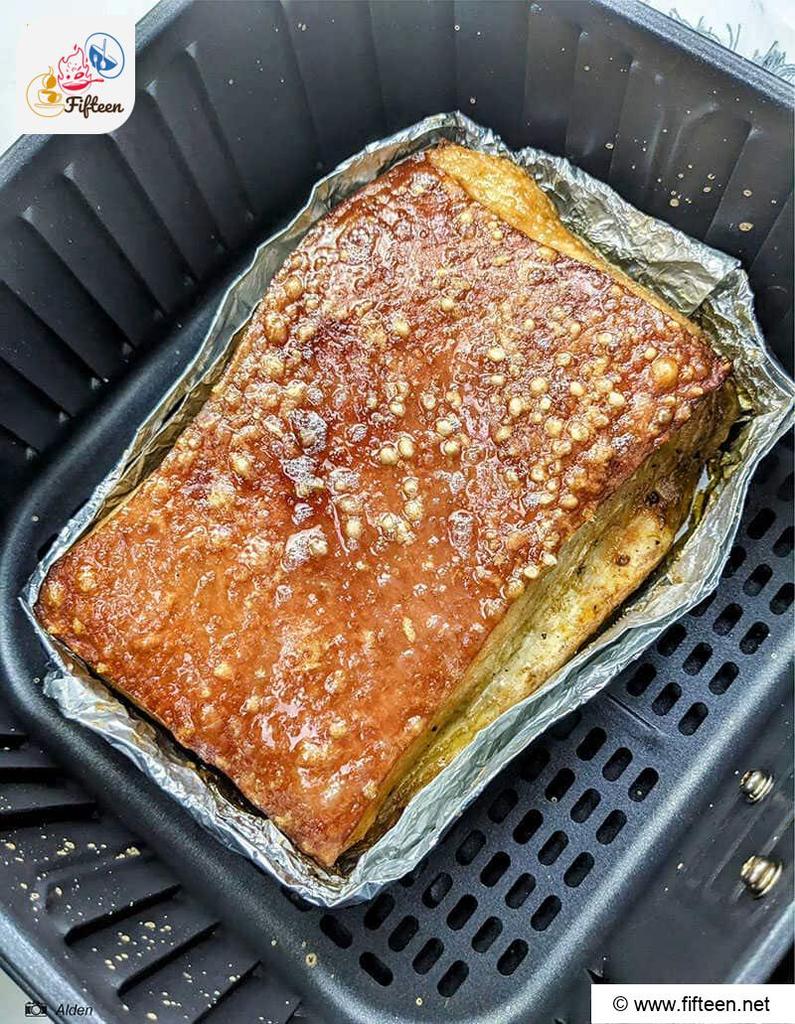
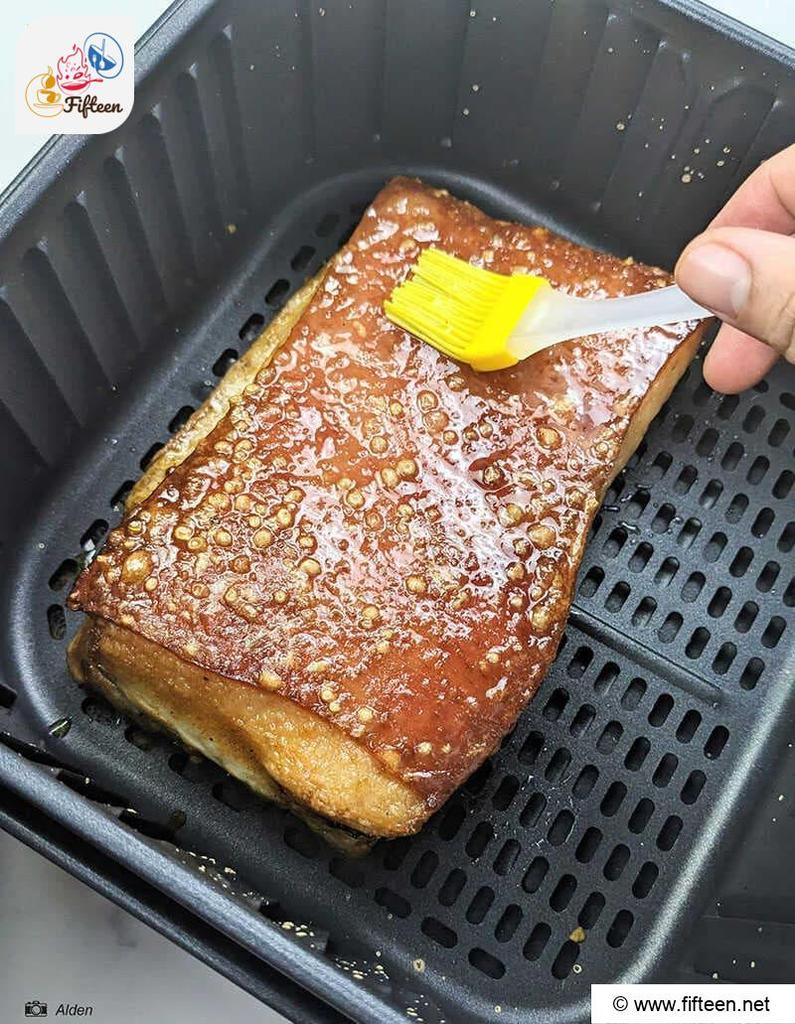
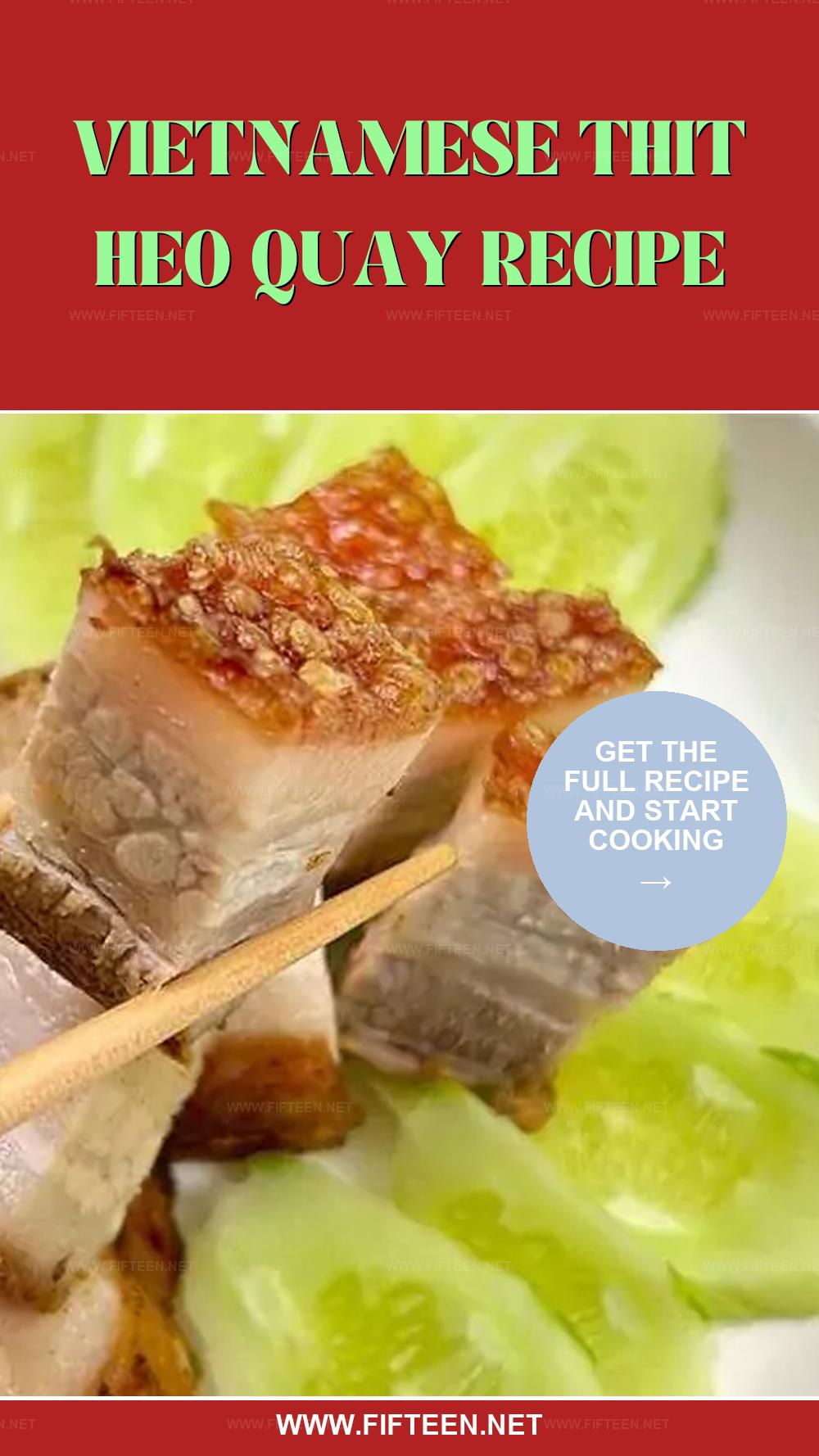
Tien – Alden
Content Writer
Expertise
Home Cooking, Recipe Development, Food Editor, Beverage Editor, Cooking-video Maker, Asian Food Content Creator
Education
Saigon Tourism College
Advanced Culinary Workshop, Beijing
Vietnamese Traditional Cooking School
American College of Vietnam
Alden is a skilled chef with expertise in Asian cuisines, known for blending traditional Vietnamese and Chinese cooking with contemporary innovations. Alden’s passion for Asian flavors and her creative approach to both food and beverages inspires fellow chefs and those aspiring to enter the field.